Science Saturdays, Year 1: Materials
Science Saturdays are sessions which teach parents/carers and children valuable STEM skills. Our goals are to increase parents' confidence in STEM skills and STEM
activities, while providing the children opportunities to play with STEM toys, such as magnifying glasses. Another goal is to increase the community
amongst the year-group families. These sessions are appropriate for schools to use in the classroom, families to do as extra learning outside school, and/or for
families who Home School / Home Educate.
This series of webpages is intended to help others set up their own Science Saturdays. We hope these webpages are helpful and help us grow our collective STEM skills
for the future!
Team:
Mridusmita Danciu: Medical Professional
Nicolae Danciu: Aircraft Engineer
Barbara Vohmann: Quantity Surveying and Construction Management Academic
Ephraim Zulu: Quantity Surveying Academic
Sarinova Simanjuntak: Mechanical Engineering Academic
Jennifer Martay: Biomedical Engineering Academic
We focused on Materials in our second Science Saturday. We used STEM Learning UK's "Science for Starters"
Materials leaflet as a basis for the session.
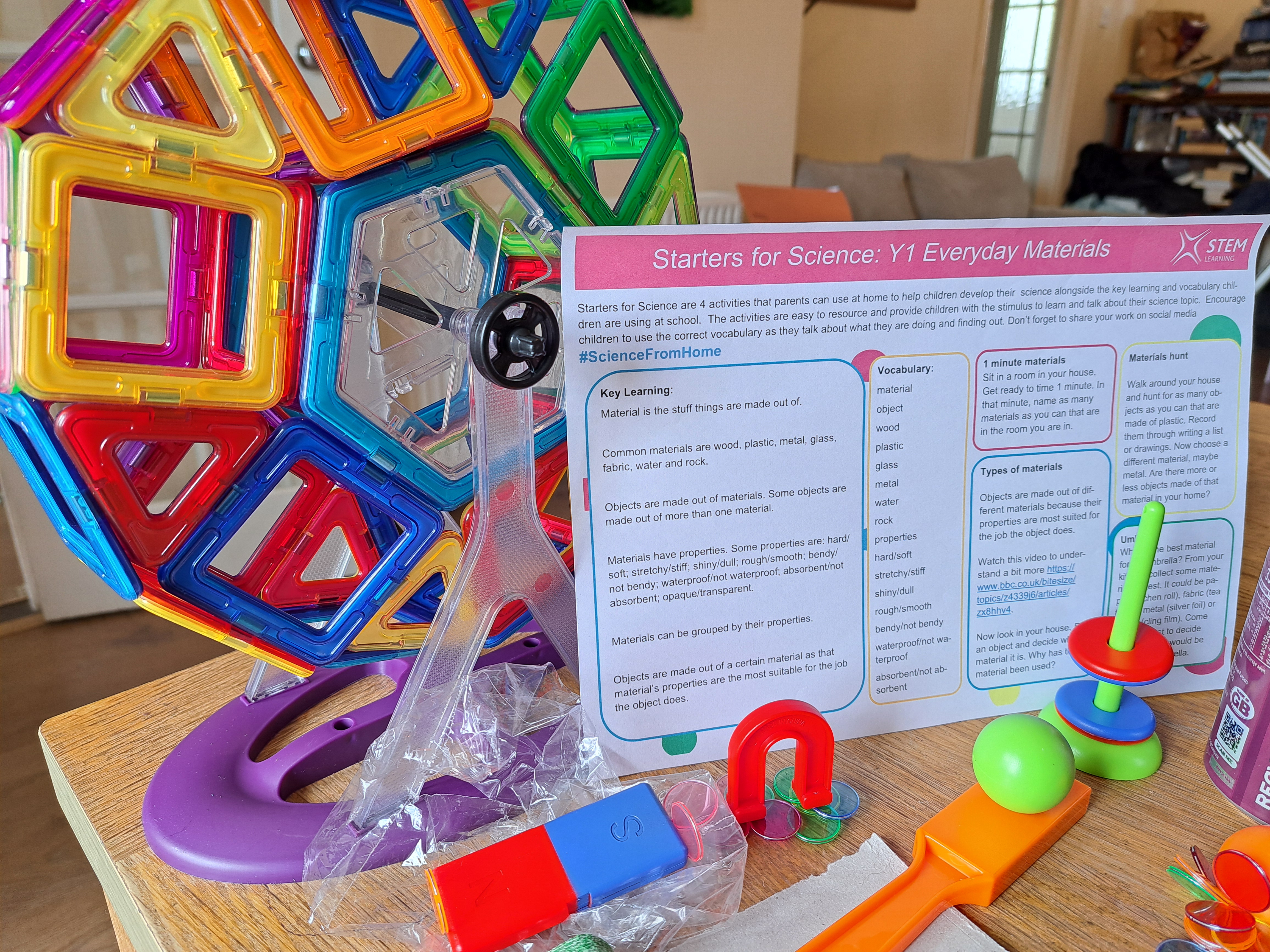
Required Materials (for 10 Families)
-10 STEM Learning leaflets on Materials, Cost = £0
-Materials (each family to bring 1-2 examples of materials to the session to discuss), Cost = £0
-
STEM Explorers: Magnet Movers, Cost = £18.99
-
Magformers Amazing Police And Rescue Magnetic Building Blocks, Cost = £24.99
-
Desire Deluxe Magnetic Building Blocks Kit, Cost = £27.99
-
5 coloured sheets of paper for making 7 material type flash cards and 16 material property flash card , Cost = £6 for 100 sheets of 10 colors
-
Pens for making material flash cards cards , Cost = £11.50 for 187 piece art kit
Total Cost = £89.47
Total Cost per Child = £8.95
Note: The above Total Cost per Child is slightly misleading! All of the materials are non-consumable so you could do infinite numbers of sessions of 10 families
each. The coloured paper and arts set were also already used in the 1st Science Saturday session so don't need to be re-bought. It is also possible to run this
session with one fewer toy set. I/the children preferred the Magnet Movers and Deluxe Building Blocks kit more than the Magformers set.
Total Cost if coloured paper and pens already available from Session 1 = £71.97
Total Cost per Child = £7.20
Plan for Session
1. Welcome families: Let children check their plant from Session 1 (ours hadn't sprouted yet), Have parents put on name tags so people can learn names, Ask parents to
take 2nd survey (newly-joining families' 1st survey), Ask newly-joining families if they are ok with pictures being taken/shared.
2. Each family introduces the material(s) they brought: What is the material called, why did they choose to bring it, what words can we use to describe the material,
what can the material be used for, etc. If multiple families bring the same kind of material, talk about differences between materials (for example, hard vs soft
plastic, magnetic vs non-magnetic metal).
3. Introduce common types of everyday materials (metal, plastic, wood, water, fabric, glass, rock), their uses, and properties (hard, soft, stretchy, stiff, shiny, dull,
rough, smooth, bendy, not bendy, waterproof, not waterproof, absorbant, not absorbant, opaque, transparent). Explain words which are likely unfamiliar (particularly
absorbant, opaque, transparent). Show flash cards and practice reading/pronouncing words.
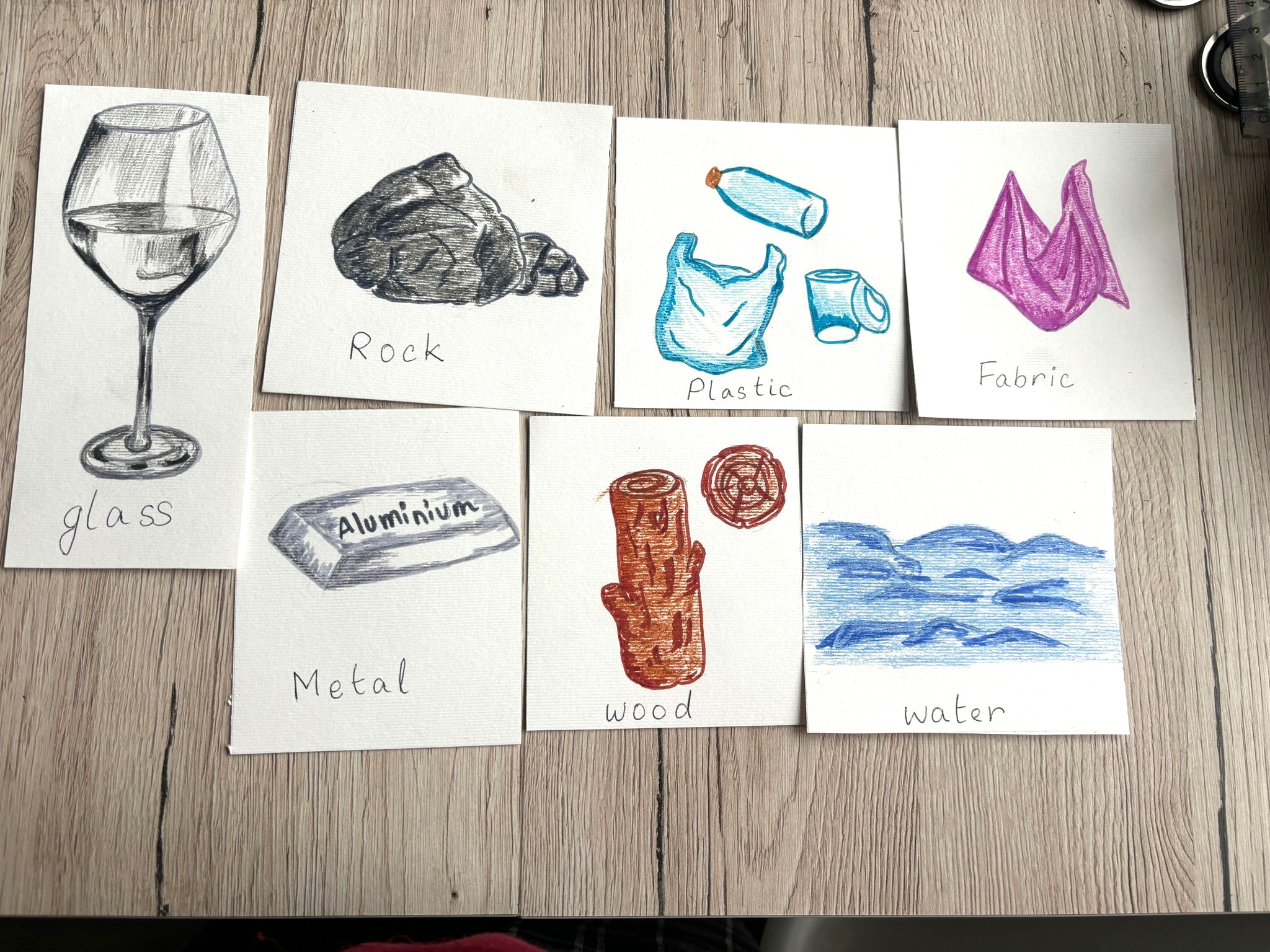
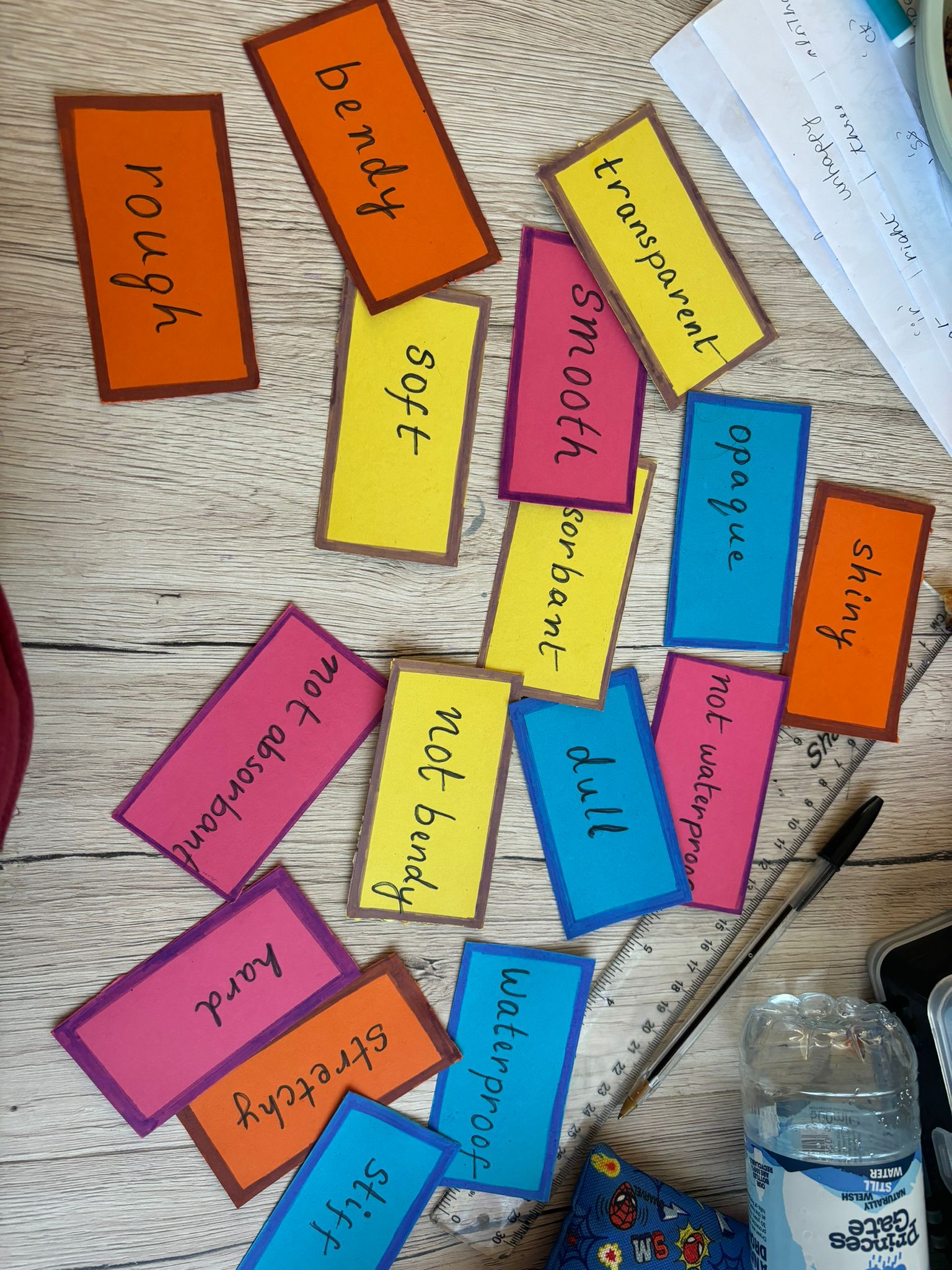
4. Group discussion of materials and properties. Children volunteer their materials one at a time. As a group, children decide material type and find flash card with
material's name (have children read words on cards). Children then identify 3-4 properties for the material and find the flash cards with those material properties.
We had a piece of fabric (shown below), tin can, tin foil paperweight, plastic bag, wooden stick, etc. The children's
attention started to wander after 3 rounds of this activity. Segway to the next activity by pointing out when the same material can have opposite properties - in
particular magnetic vs non-magnetic metal.
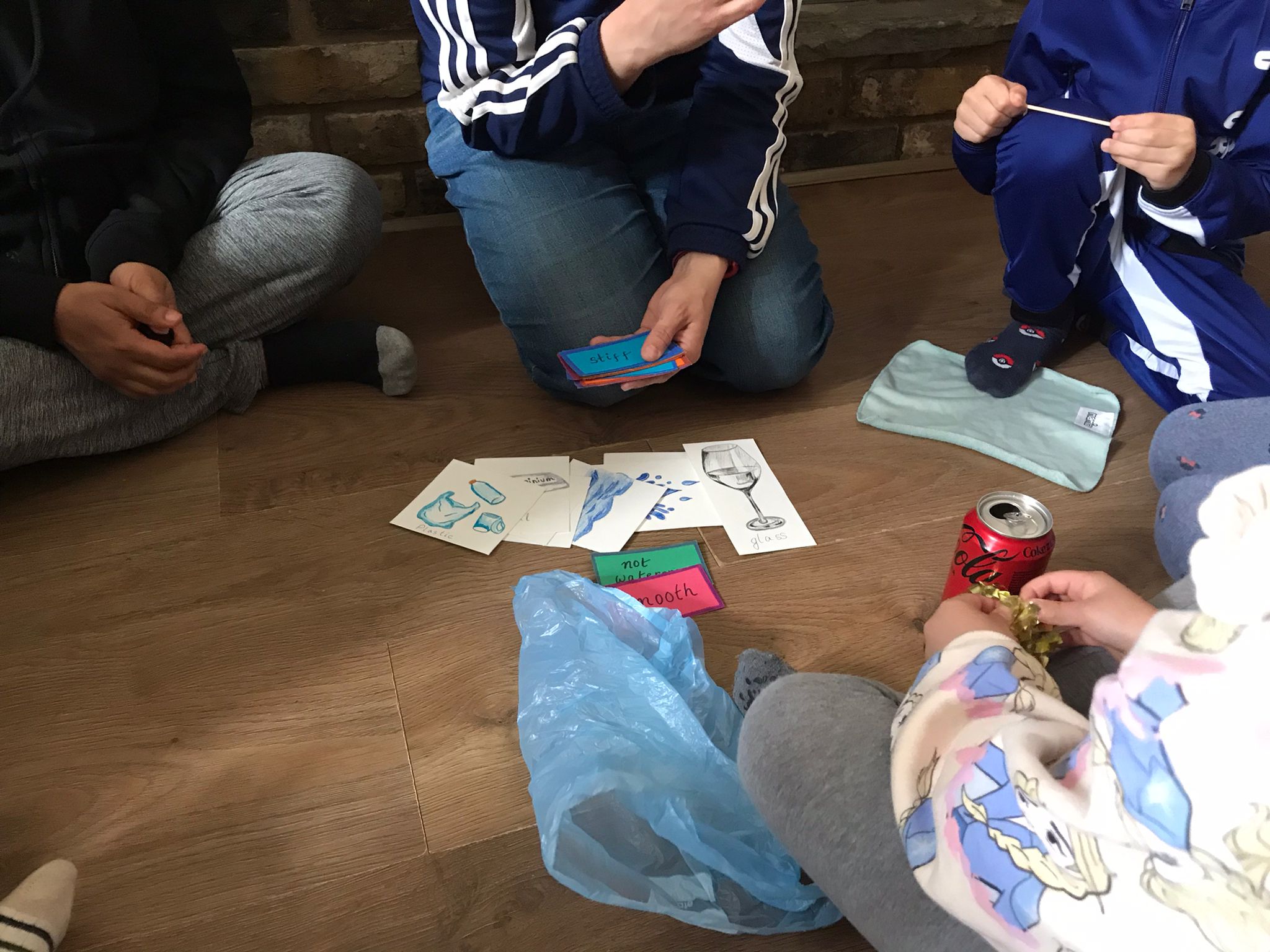
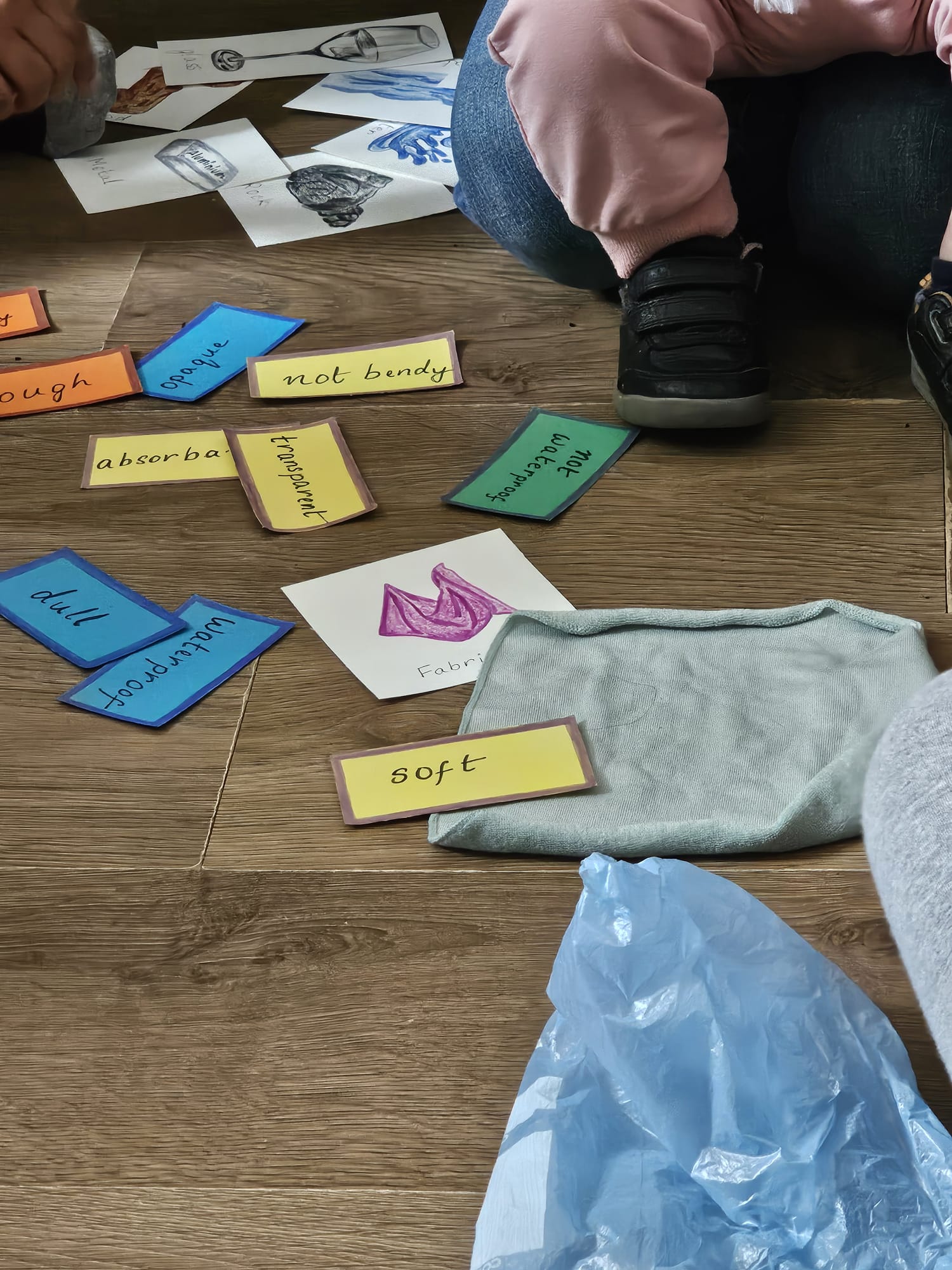
5. Explore magnetism using Magnet Movers. Explain the different types of magnets (U, bar, wand, circles, balls) to the children. Let children use the magnets to test
whether their metal materials are magnetic. The Magnet Movers kit comes with 10 experiments to try, but we found it worked well to let the children explore
the magnets in an unguided way at first. Once the initial newness wore off, we set up 2 experiments (and explained how experiments let us investigate questions we have).
In Experiment 1, we tested if magnets could work through a piece of cardboard. In Experiment 2, we tested how many objects could hang off a magnet before the
objects fell off. Then, the children repeated these experiments themselves on their own. Children (and adults!) absolutely love this activity!
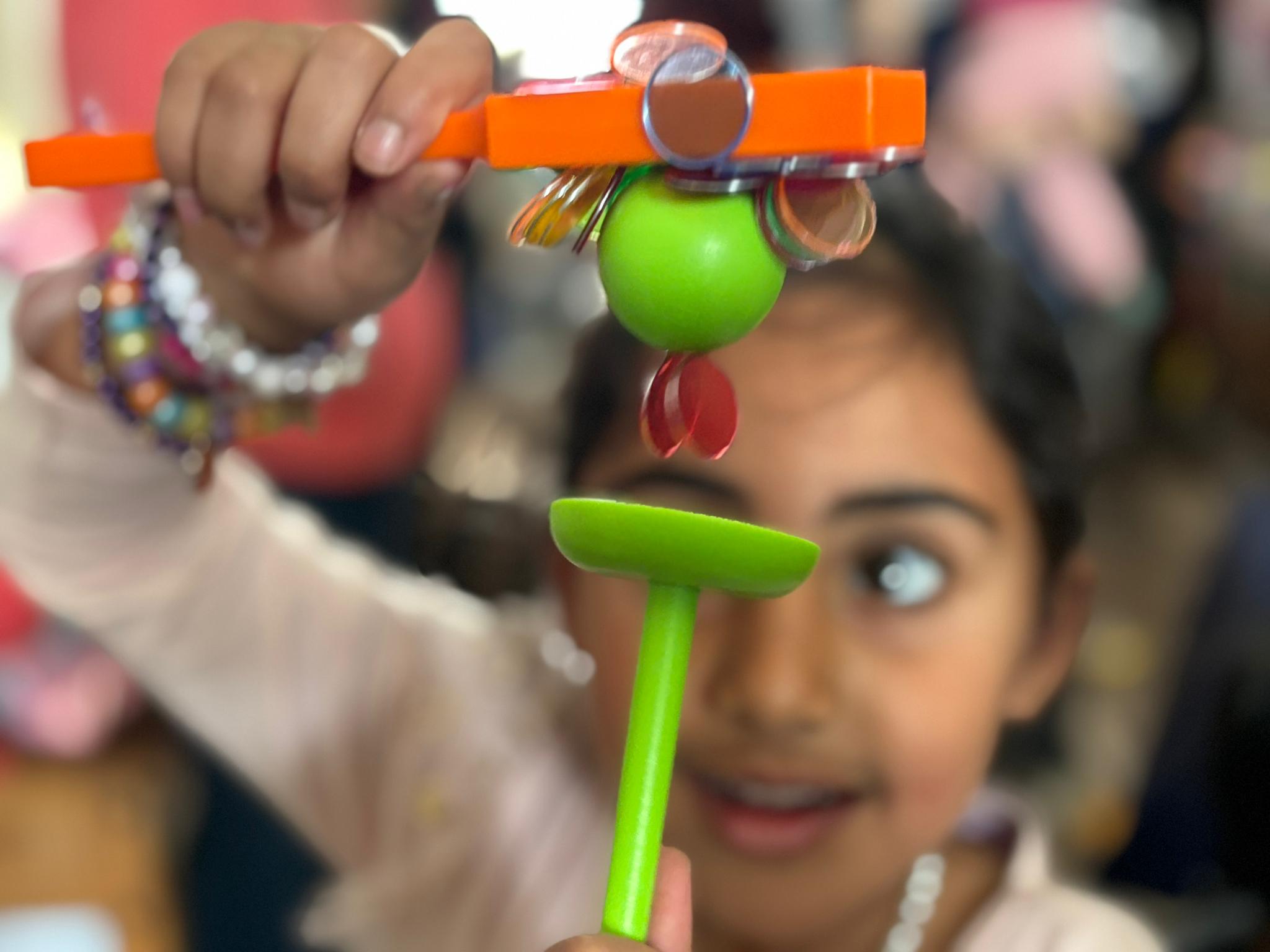
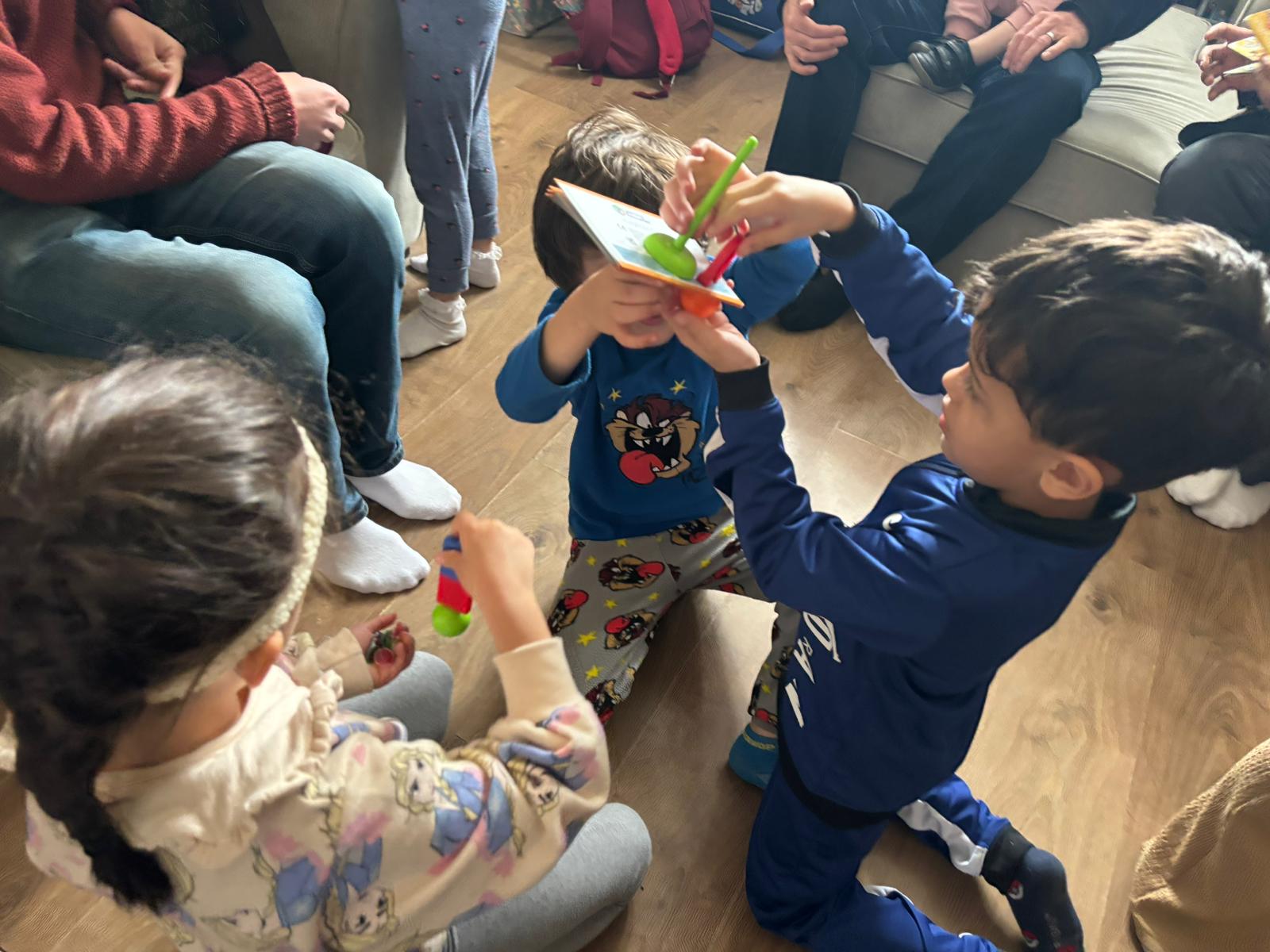
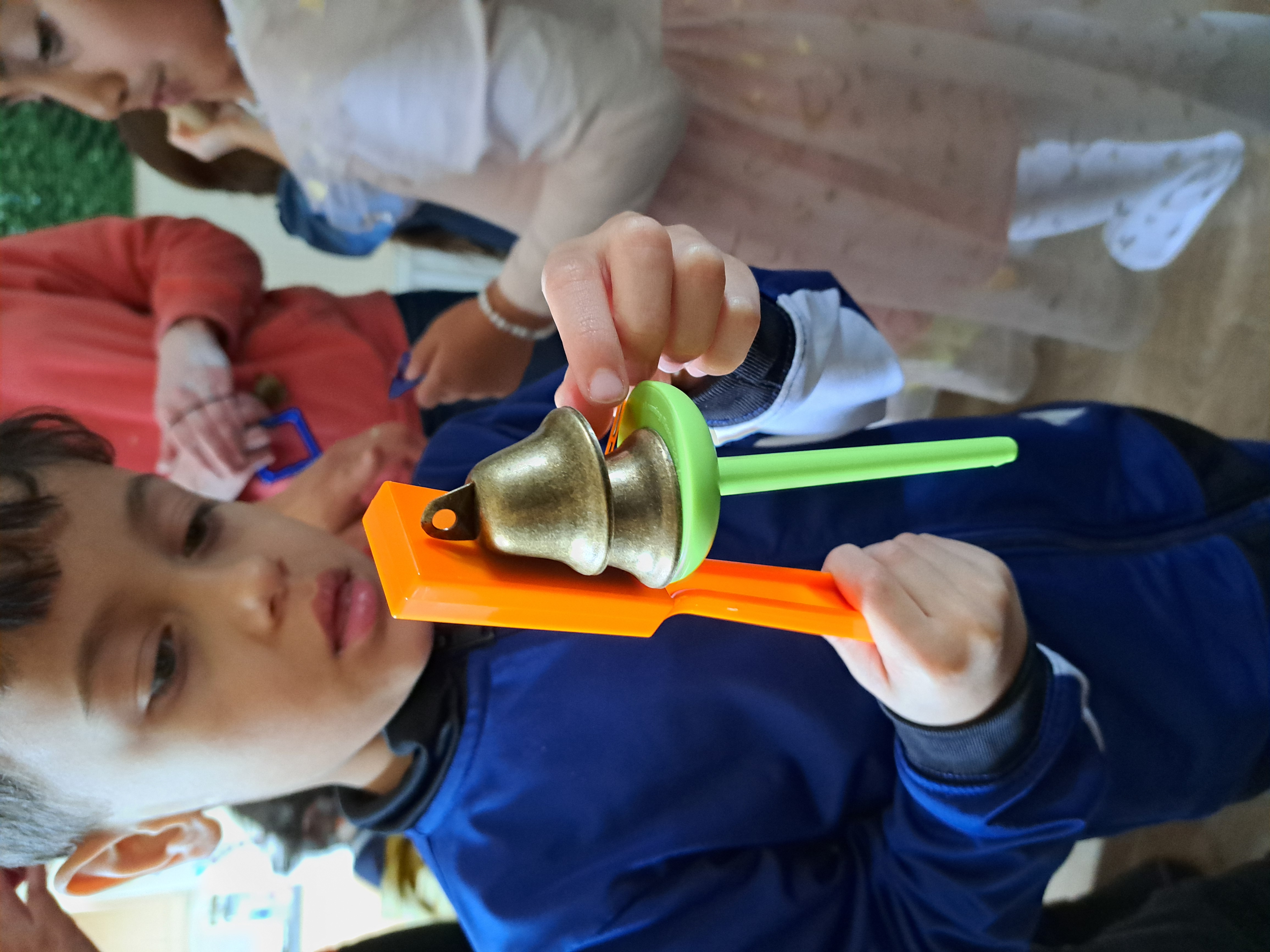
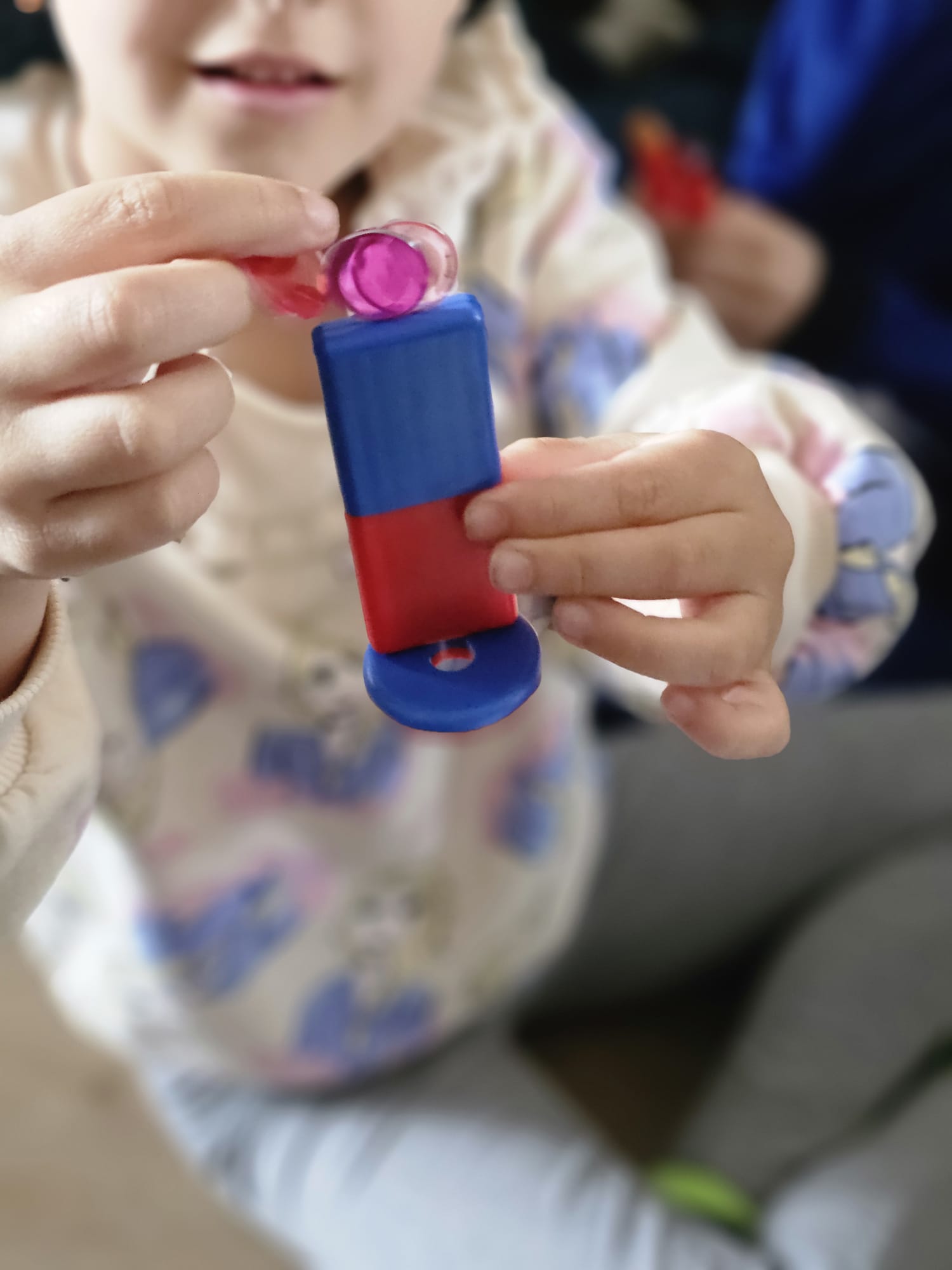
Families then choose to either A. Build Magnetic Structures or B. Design/Create an Umbrella
Have Group A families free-play with the Magnetic Building Blocks, either building structures from their own imagination or from the booklet provided in the kit.
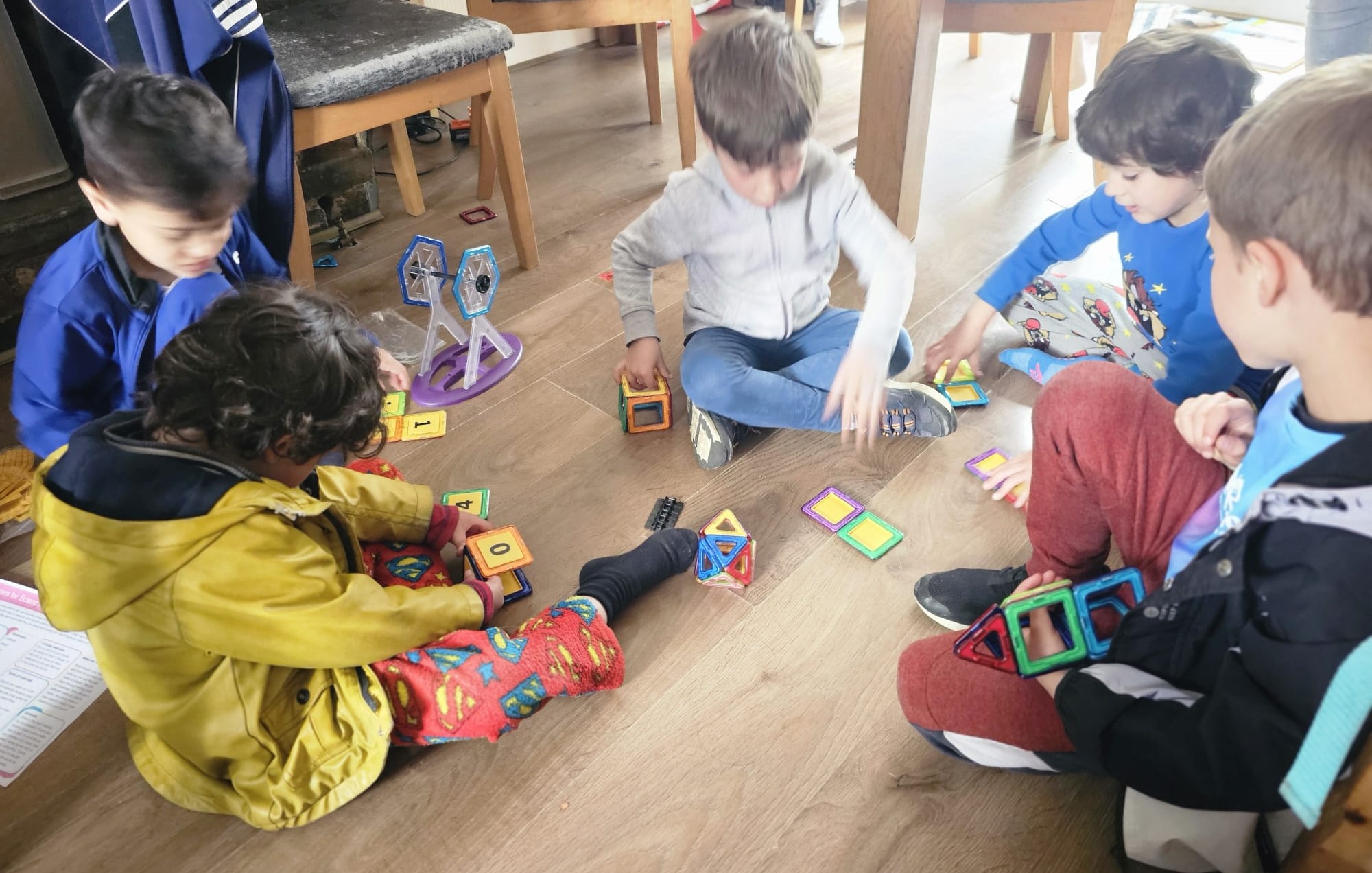
While Group A families are setting up structures, guide Group B families in designing their umbrellas. First, discuss what type(s) of material are needed for an
umbrella (waterproof covering, stiff stick, etc). Brainstorm which household items could be used for the umbrella (for example: waterproof = cling film, plastic bag,
baby stroller rain cover, etc). Build the first prototype umbrella and pretend to use it. Identify any problems, for example, would the waterproof material stay spread
out above our head? or fall down around our umbrella stick? Brainstorm how to hold the waterproof material out (a hoop, more sticks, etc). Update the prototype,
test the new prototype, identify any problems, brainstorm solutions, and repeat as needed.
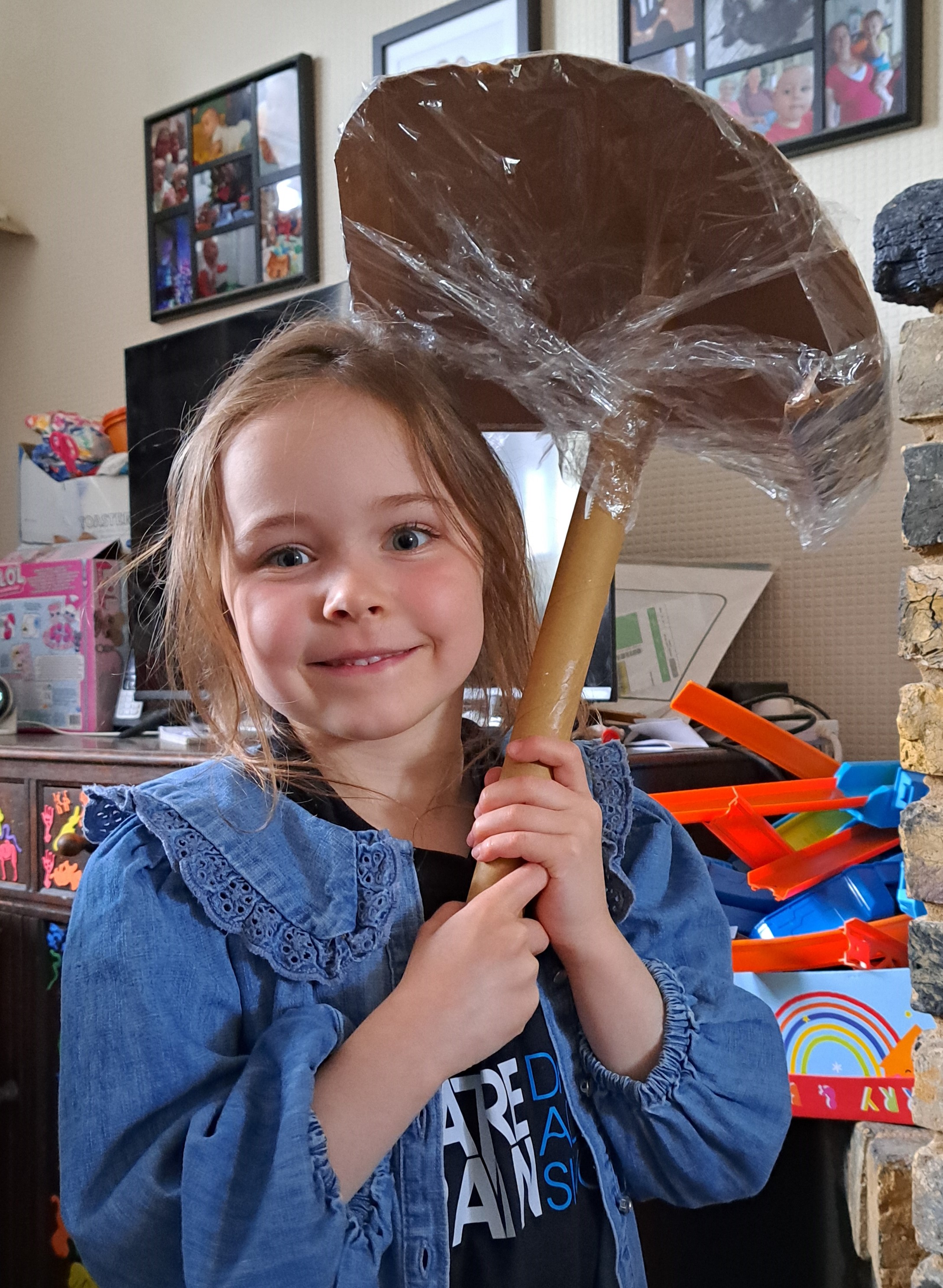
While Group B families are creating their new prototypes, check in with Group A families to see how their structures are coming along. You will need to bounce back and
forth between the Group A and Group B families for this activity. Be sure to praise everyone's creativity, persistance, resilence, and design and troubleshooting skills.
7. Mention the theme and a highlight of the next Science Saturday session to keep families interested in attending!
Skills Learned/Practiced
STEM SKILLS
-Knowledge of different types, properties, and uses of everyday materials
-Identifying similarities and differences between materials families bring (relative sizes, shapes, etc)
-Practical experience using magnets
-Practical experience building structures (either from imagination or reading a manual): gross and fine motor skills, spatial awareness
-Familiarity with concept of "experiments": having a question, testing idea, determining answer
-Familiarity with concept of "design": identifying needs, brainstorming potential solutions to meet needs, testing potential solutions
NON-STEM SKILLS
-Public speaking: explaining materials to group
-Reading: reading flash cards with material names and properties
-Writing name on name tag
-Creativity in design of umbrella and/or other structures
-Working in teams to decide material types/properties and create structures
-Troubleshooting, resilience, and persistence when creating structures (sometimes the structures don't work as expected and you need to try again!)
Outputs/Take-Homes from Session
-Material example(s) brought to session
-Umbrella for Group B families
-Pictures taken of families during session
Other Articles:
Benzene QMC GalleryA gallery of images from an attempt to model the benzene ground state using a variational and diffusion monte carlo method. |

|
Mars Re-EntryA ThreeJS simulation of Mars re-entry in a spaceship. |
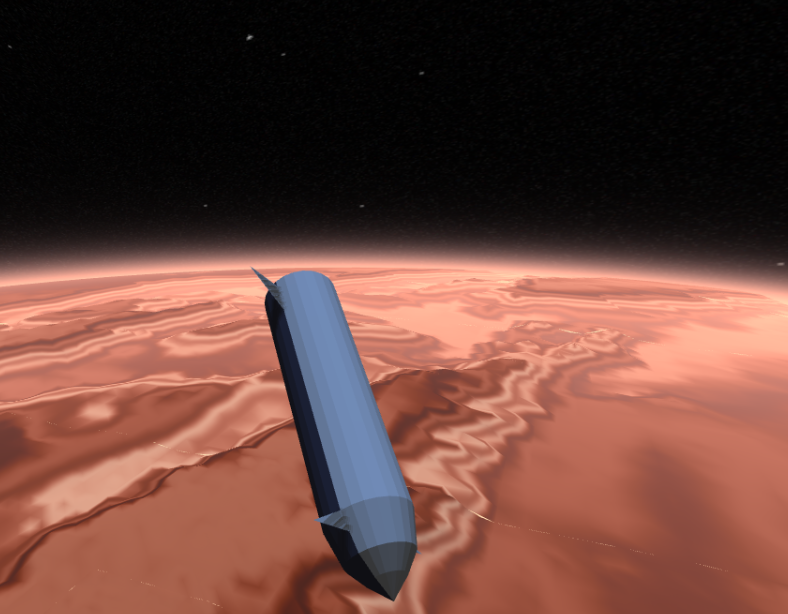
|
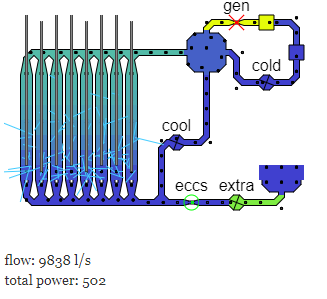
|
Chernobyl SimulationAn attempt to simulate the normal running, and then accident of the Chernobyl nuclear reactor. |
© Hugo2015. Session @sessionNumber